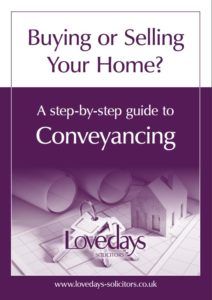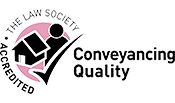- You & Your Family
- Your Job
- Family Law
- Divorce and Separation
- Finances on Divorce
- Dissolution of Civil Partnership
- Separation
- Cohabitation Agreements
- Finances on Breakdown of Cohabitation Relationship
- Prenuptial Agreements
- Grandparents' Rights
- Step-Parents' Rights
- Child Maintenance
- Parental Responsibility
- Paternity Disputes
- Buying Property Jointly
- Probate
- Wills
- Your Property
- Conveyancing
- Partnerships
- Disputes
- Boundary Disputes
- Dealing with Rent Arrears
- Japanese Knotweed Claims
- Landlord and Tenant Disputes
- Landlord Harassment & Illegal Eviction
- Negligence Claims Against Builders & Developers
- New Build Property Disputes
- Noisy Neighbour Disputes
- Personal Debt Collection
- Property Misrepresentations Claims
- Rights of Way Disputes
- Section 21 No Fault Evictions
- TOLOTA Claims
- Tree & Hedge Neighbour Disputes
- Your Business
- About Us
Boundary Disputes
Did you know that land title plans do not always correlate with what is on the ground and therefore this can give rise to arguments about who owns what? Not only can this cause boundary disputes but also it can be expensive to resolve without the correct advice from the outset.
Understanding Property Boundaries
There are two types of property boundaries that are recognised in English and Welsh law; physical boundaries and legal boundaries. Legal boundaries are simply a line on a plan or a description of an area that divides one property from another. Physical boundaries are any structure or barrier separating the properties such as fences, walls, or hedges.
Land Registry & Title Plans
The Land Registry is the government department that is responsible for maintaining the records of ownership and boundaries for landowners in England and Wales. One of the key documents that you can find in the Land Registry is a title plan.
Title plans are a graphical map that illustrate the extent of a property’s boundaries. They are usually based on ordnance survey maps, which can sometimes cause problems if the survey they are based on is outdated. This can occur for a number of reasons, for example when new fences are put in that aren’t where the original ones were or if other landmarks (such as trees) have been removed.
Pre-Registration Deeds
Pre-registration deeds are legal documents that have been used in the past to establish who has rights over a property. Pre-registration deeds can be made up of a number of different types of documents that are used to convey ownership such as conveyances, wills, mortgages, leases, and easements.
The Land Registry system has largely replaced the need for these documents and, as such, the Land Registry doesn’t hold them on file so it is important to keep them in personal records. Pre-registration deeds can often be helpful in resolving boundary disputes as they can show historical records of ownership, rights and restrictions in place on the land, as well as show ownership in instances where the land has not been registered.
{quote}
Common Causes of Boundary Disputes
Property boundary disputes between neighbours can be caused by any number of reasons, from errors in the legal documents to physical changes to the property. Here are a number of common causes for boundary disputes.
House Extensions
House extensions often become the topic of disputes between neighbours. Extensions cause boundary disputes as they can sometimes block or narrow shared accessways or even encroach on a neighbour’s property if the size and shape differ from the originally granted plans during construction.
Trees & Fencing
Trees and fencing are other common causes of boundary disputes. Trees can cause disputes in a variety of ways, for example if an overhanging tree falls and causes damage you may be liable for the damage or if tree roots are causing damage to neighbouring land and buildings.
Additionally, if fences are damaged or need replacing, you could find yourself in a boundary dispute to determine whose responsibility it is to replace the fence.
Changes in Ownership
Changes of ownership of land may also lead to boundary disputes. This is often the result of new owners misinterpreting title plans. This can cause disputes as the new owners may be violating the property boundaries without realising.
Errors in Conveyancing
Errors in conveyancing can be caused by a long list of things. For example, outdated information on the boundaries from old ordnance surveys and ambiguity in the descriptions of the property can result in confusion where the true boundary is, thus causing a dispute.
{quote}
How to Determine a Boundary Line
If you’re unsure where your boundary line for your property is, there are a number of steps that you can take to determine where it lies.
Expert Surveyors & RICS Guidelines
One option is to hire a surveyor to determine the property boundary for you. A surveyor will survey the property as well as check through the title plans, deeds and historical documents to determine the true boundary of the property.
This can, however, be expensive so you may decide to access the deeds and plan yourself to determine the property line but the expertise of a surveyor can prove to be a valuable asset for some.
Examining Deeds & Documents
If you decide to try and determine the property boundary on your own, your first port of call should be to examine the deeds and documents associated with the land. The title plans are publicly available from the Land Registry and can be downloaded from their website.
You may also want to consider examining historical documents such as conveyances and the ownership history of the land in order to determine any changes that have been made in the event that the title plan for the land is outdated.
Adverse Possession Considerations
Adverse possession is an important consideration to make when entering a property dispute. Adverse possession is a legal principle in the UK that allows a person to acquire ownership of land if they have “possessed” it for a certain period of time (10 years for registered land and 12 years for unregistered land), even without permission from the legal owner.
For adverse possession to take effect, the person must have had “factual possession” of the land. This means that they have treated the land as their own and have excluded others from it. The person must also have had continuous and uninterrupted possession of the land without any challenges from the legal owner.
{quote}
Resolving Boundary Disputes
As with any dispute, it is highly advisable that you seek legal advice and avoid escalating the dispute to the courts as this can be a lengthy and costly process. However, there are alternative options that you have at your disposal in order to resolve the dispute before it becomes a legal matter.
Communication & Compromise
Clear communication and being open to compromise is essential in avoiding as well as resolving boundary disputes. Communicating and intentions to alter your property or any concerns that you have with boundary lines is an effective way of keeping an open dialogue resulting in compromise and resolution of any disputes.
Mediation & Legal Help
If the dispute cannot be resolved internally, then mediation can be an excellent option. Having an unbiased third party mediate over the dispute can help provide clarity on both sides of the dispute while also helping to avoid the courts.
{quote}
How Lovedays Solicitors Can Help
Lovedays Solicitors has been acting for clients in the Derbyshire area since 1905. We have an extensive history and an in-depth knowledge of the area of Derbyshire and in particular Matlock and Wirksworth.
Our Dispute Resolution Solicitors have an in-depth and intimate understanding of boundary disputes. We also have detailed knowledge of the Derbyshire area. Our specialist Lawyers can ensure that the advice given is tailored to you and your business.
Get Support Today

Free Guide
If you don’t know your leasehold from your freehold, then get our Free Conveyancing Guide. It contains details about the steps you will need to take with any property transactions. The Guide giving you detailed guidance on what your lawyer will be doing for you and what to look out for.


Lovedays Solicitors, Brooke-Taylors Solicitors, Potter and Co Solicitors and Andrew Macbeth Cash and Co Solicitors are the trading names of Derbyshire Legal Services Limited which is a company registered in England and Wales under company number 08838592. Registered office Sherwood House, 1 Snitterton Road, Matlock, Derbyshire, DE4 3LZ.
Authorised and Regulated by the Solicitors Regulation Authority under SRA ID number 637916.
-
01629 56660
-
This email address is being protected from spambots. You need JavaScript enabled to view it. -
Sherwood House
1 Snitterton Road
Matlock
Derbyshire
DE4 3LZ
© Copyright 2019 Derbyshire Legal Services Limited | Website by WebWorks